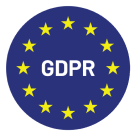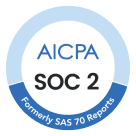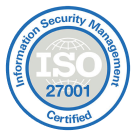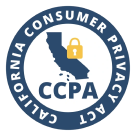How to Leave a HIPAA-Compliant Voicemail: Scripts & Best Practices

Human error is the primary cause of data breaches, responsible for 52% of incidents*. All it takes is a single voicemail revealing too much information to put sensitive data at risk.
Are you worried about cyberattacks on your database? You should know that the biggest threat isn’t external—it comes from within your company: your employees. Most data leaks occur when staff fail to follow policies and procedures*.
This includes adhering to basic security measures, such as leaving HIPAA-compliant voicemails. Even small lapses—like mentioning sensitive details—can put patients at risk and create serious compliance issues for healthcare call centers handling their data.
This article will cover the best practices for HIPAA-compliant voicemail, ensuring your messages remain secure, professional, and legally compliant while protecting patient privacy.
Key Takeaways:
- A HIPAA-compliant voicemail follows strict privacy guidelines, ensuring that no protected health information (PHI) is disclosed and includes only essential details.
- A voicemail with too much detail violates HIPAA regulations, resulting in significant fines, legal action, and, most critically, a breakdown of trust between patients and healthcare providers.
- Best practices for HIPAA-compliant voicemails involve keeping messages brief and vague, avoiding medical details, using secure voicemail systems, verifying patient consent, and providing only the caller’s name and a callback number.
HIPAA Compliance Made Easy—Secure Your Voicemails with CloudTalk!
What is HIPAA-Compliant Voicemail?
A HIPAA-compliant voicemail is a recorded message that follows the privacy and security rules set by the Health Insurance Portability and Accountability Act (HIPAA).
This ensures that patient details are kept confidential, limiting sensitive information that could be overheard or misused.
Why It Matters
A simple voicemail containing personal information can inadvertently breach HIPAA regulations, leading to hefty fines, lawsuits, and, most importantly, a loss of trust between patients and providers.
Here’s why HIPAA-compliant voicemail is critical:
- Protects patient privacy: Ensures that sensitive health information isn’t exposed to unauthorized individuals.
- Prevents legal and financial consequences: Non-compliance can result in fines of up to $50,000 per violation*.
- Enhances professional reputation: Patients feel safer knowing their information is handled securely.
- Reduces risks of identity theft: Cybercriminals can exploit leaked PHI, leading to fraud and unauthorized access to medical records.
What Is Allowed in a HIPAA-Compliant Voicemail?
Leaving a voicemail for a patient might seem harmless, but when it comes to the healthcare industry, there are strict guidelines to follow.
Messages should be structured to ensure that no unauthorized individual can gain access to confidential patient information simply by hearing the voicemail.
The Dos and Don’ts of Leaving Voicemails for Patients
Dos and Don’ts
✅ What You CAN Say:
- Your name and role within the medical office.
- The clinic or practice’s name.
- A general reason for calling, such as confirming an appointment or requesting a callback.
- Contact information and clear instructions on how the patient can reach back
🚫 What You SHOULD NOT Say:
- Any mention of the patient’s diagnosis, condition, or test results.
- Details about prescriptions, treatments, or upcoming procedures.
- Financial or insurance-related matters, such as billing or coverage status.
- Personally identifiable details, like social security numbers, birth dates, or medical record numbers
Under HIPAA regulations, patients have the right to control how much information can be shared. With written consent, healthcare providers may include additional details—such as test results or medication updates—but only within the specific limits outlined by the patient’s authorization.
Best Practices for HIPAA-Compliant Voicemail Messages
Ensuring voicemail messages comply with HIPAA regulations requires careful wording to protect patient privacy while maintaining clear communication. Here are five key best practices to follow:
Keep Messages Vague and Brief
When leaving a voicemail, avoid sharing any personal health information (PHI). The message should be short and neutral, ensuring that no sensitive details are disclosed.
Leave a Callback Number Only
A compliant voicemail should only include a name and callback number. Avoid adding any details that might indicate the purpose of the call unless the patient has provided explicit written consent to receive more specific information.
Do Not Mention the Patient’s Medical Condition
Under HIPAA rules, test results, diagnoses, treatments, or any other medical details should never be left in a voicemail. Even if a patient is expecting results, they must call back to receive the information in a secure manner.
Obtain Patient Consent for Voicemails
Before leaving any voicemail, document the patient’s communication preferences. If a patient has provided written consent for detailed messages, you may leave more information—but only within the limits of their authorization.
Use a Secure Voicemail System
To prevent unauthorized access, healthcare providers should use a HIPAA-compliant phone system with encrypted voicemail services that ensure secure storage and transmission of messages. This added layer of protection helps safeguard patient information and maintain compliance.
Solutions like CloudTalk provide secure, cloud-based voicemail storage, ensuring that messages remain protected and accessible only to authorized recipients.
HIPAA-Compliant Voicemail Script Examples
Crafting HIPAA-compliant voicemail messages is all about maintaining privacy, professionalism, and clarity. Below are six examples of secure voicemail scripts for different situations.
1. General Callback Request
SCript
“Hello, this is [Your Name] from [Healthcare Provider’s Office]. I’m calling regarding an important matter. Please call us back at [Phone Number] at your earliest convenience. Thank you.”
Why this works:
- No mention of medical conditions, test results, or treatments
- Directs the patient to return the call for details
2. Appointment Reminder
SCript
“Hello, this is [Your Name] from [Clinic Name]. We are calling to remind you of your upcoming appointment on [Date] at [Time]. If you need to reschedule, please call us back at [Phone Number]. Thank you.”
Why this works:
- Only shares necessary appointment details
- Avoids mentioning the reason for the appointment
3. Prescription Refill Notification
SCript
“Hello, this is [Your Name] from [Pharmacy or Provider’s Office]. We have an update regarding your prescription request. Please call us back at [Phone Number] for more information. Thank you.”
Why this works:
- Doesn’t mention the name of the medication
- Keeps the message general while prompting the patient to follow up
4. Test Results Ready for Discussion
SCript
“Hello, this is [Your Name] from [Healthcare Provider’s Office]. We have an update regarding your recent visit. Please call us at [Phone Number] to discuss. Thank you.”
Why this works:
- Doesn’t disclose test results over voicemail
- Encourages the patient to call for further information
5. Billing Reminder
SCript
“Hello, this is [Your Name] from [Billing Office Name]. We need to speak with you regarding an important billing matter. Please call us back at [Phone Number] at your earliest convenience. Thank you.”
Why this works:
- Keeps financial information private
- Uses neutral wording to ensure a confidential voicemail
6. Referral or Specialist Coordination
SCript
“Hello, this is [Your Name] from [Healthcare Provider’s Office]. We are calling regarding your referral request. Please return our call at [Phone Number] for more details. Thank you.”
Why this works:
- Does not specify the type of referral or medical condition
- Provides a clear action step for the patient
Additional HIPAA Voicemail Compliance Tips
Beyond using HIPAA-compliant voicemail scripts, healthcare providers, whether therapists, nurses, or counselors, should take extra precautions to maintain patient privacy and ensure regulatory compliance. Here are some tips to follow:
- Conduct Calls in a Private Room: Always make calls from a secure, private space to prevent unauthorized individuals from overhearing.
- Double-check Contact Preferences: Verify whether the patient has consented to voicemail messages and if they have a preferred phone number for contact.
- Use a Professional and Calm Tone: Keep messages clear and neutral. Avoid rushing or using overly technical terms that could confuse the patient.
- Limit Voicemail Retention Time: Set policies to delete old voicemail messages regularly to minimize the risk of unauthorized access or breaches.
- Train Staff on HIPAA Guidelines: Conduct regular training to ensure that all staff members understand and consistently follow HIPAA compliance rules.
Ensure HIPAA-compliant voicemails with CloudTalk
A Well-Trained Team: The Best Cybersecurity Investment
Of the human errors that resulted in a data breach, 42%* were due to “general carelessness.” This proves that training and awareness can safeguard your call center better than any software against cyberattacks.
Organizations that prioritize clear, concise, and regulation-compliant voicemail practices not only protect patient confidentiality but also strengthen their reputation as trustworthy providers.
Alongside that, with HIPAA-compliant voicemail solutions like CloudTalk, your call center and patient data stay safe and secure. From there, simply follow the best practices in this article to leave messages with confidence and peace of mind.
A well-crafted voicemail is one that informs without exposing, communicates without confusion, and cares without overstepping.
CloudTalk: Easy for your agents and 100% safe for patients.
Sources:
FAQs
Who is required to comply with HIPAA?
Healthcare providers, health plans, clearinghouses, and any business associates handling protected health information (PHI) must follow HIPAA regulations.
What is a HIPAA-compliant voicemail greeting?
A voicemail greeting that does not disclose medical conditions, test results, or treatments—just the caller’s name, office name (if general), and a request to return the call.
What is a HIPAA-compliant voicemail message?
A message that includes only essential details, such as the provider’s name, office, and callback number, without mentioning medical information or sensitive patient data.
How does a voicemail system become HIPAA compliant?
By using encryption, secure storage, access controls, and ensuring messages don’t contain PHI unless the patient has provided explicit written consent.
Why is HIPAA-compliant voicemail important in healthcare?
It protects patient privacy, prevents data breaches, ensures legal compliance, and helps maintain trust between healthcare providers and patients.
What are some key features of a HIPAA-compliant voicemail system?
Encryption, secure login access, automatic message deletion, audit logs, and restricted access to prevent unauthorized listening.
What are common mistakes to avoid when implementing a HIPAA-compliant voicemail system?
Leaving PHI in messages, using unencrypted voicemail, failing to verify patient consent, and not training staff on HIPAA voicemail policies.
How can healthcare organizations ensure their voicemail system remains HIPAA compliant?
Regularly audit voicemail policies, train staff on best practices, use secure and encrypted systems, and verify patient preferences before leaving messages.
Which healthcare professionals should use HIPAA-compliant voicemail?
All the healthcare providers. Therapists, counselors, medical offices, dental clinics, and nurses are among the professionals who should follow the confidential voicemail greeting examples mentioned in this article.




















